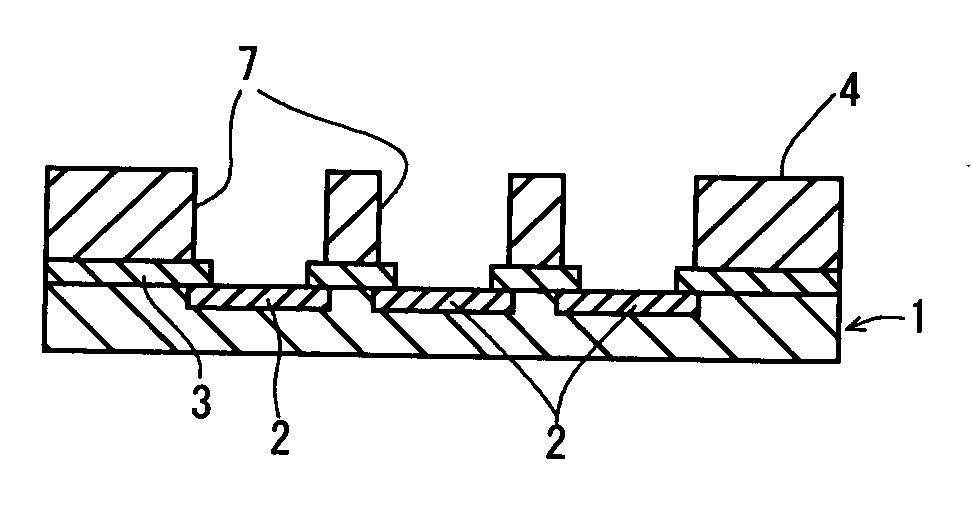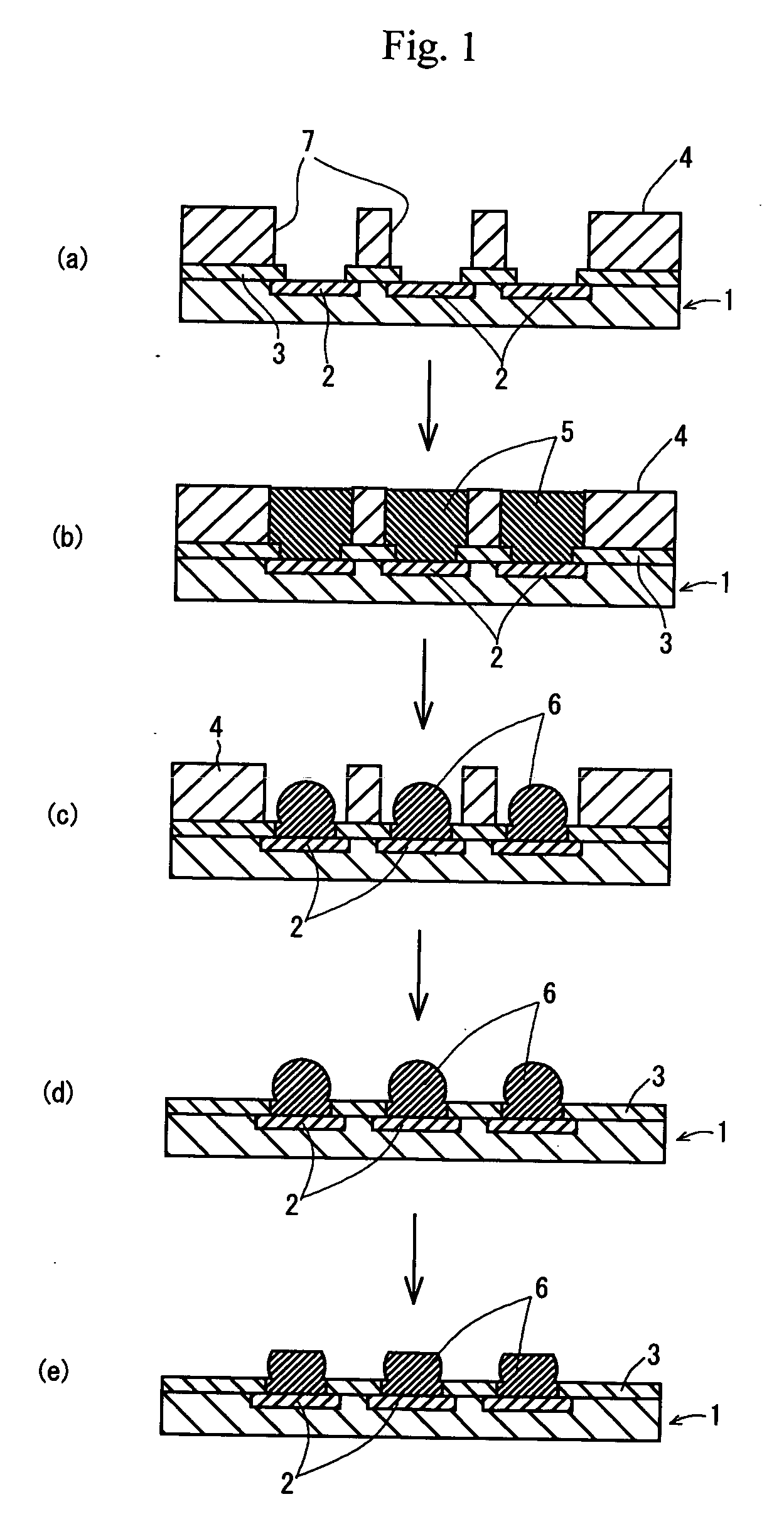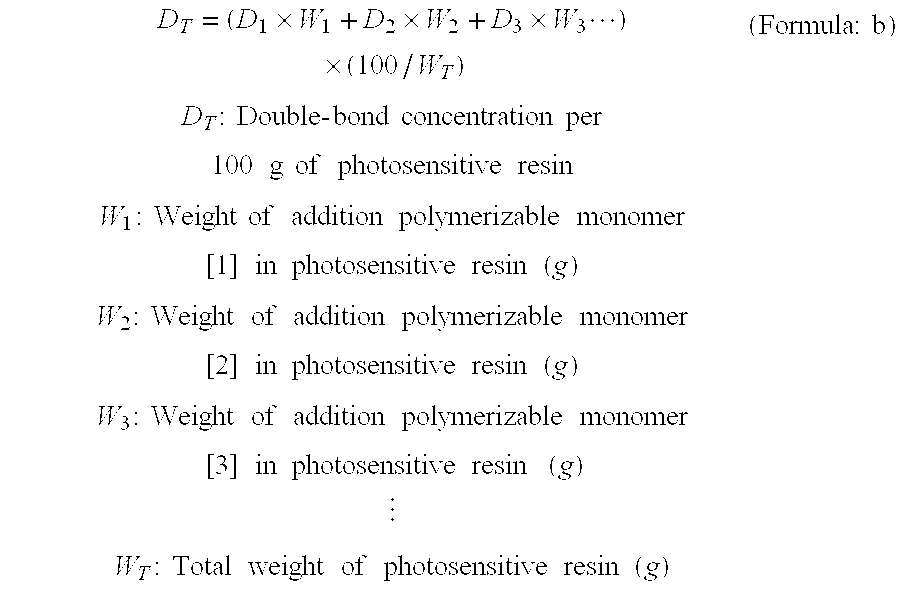Method for removing resin mask layer and method for manufacturing solder bumped substrate
a technology of resin mask and substrate, which is applied in the direction of resist details, photosensitive material processing, electrical apparatus construction details, etc., can solve the problems of resin mask layer residue on the substrate having negative effects on subsequent electronic packaging, affecting the quality of solder bumps on the substrate, and difficult to completely remove resin mask layers. , to achieve the effect of easy removal, short period of time, and easy removal
- Summary
- Abstract
- Description
- Claims
- Application Information
AI Technical Summary
Benefits of technology
Problems solved by technology
Method used
Image
Examples
example i
(Substrate)
[0061] The substrate used here was covered with a 10 μm thick solder resist film, and had pads (electroless nickel gold plated electrodes) exposed from opening parts (diameter: 80 μm) that were formed in the solder resist film. The pads were formed at 150 μm pitches on the substrate.
(Preparation of Dry Film Resist (a))
[0062] The following ingredients were mixed to prepare a photosensitive resin solution.
Methyl ethyl ketone solution of a terpolymer of 65% by weight of methyl 65 gmethacrylate, 25% by weight of methacrylic acid and 10% by weight of butylacrylate (concentration of solid content: 34%, weight-average molecular weight:80,000, acid equivalent: 340)Methyl ethyl ketone solution of a terpolymer of 65% by weight of methyl 88 gmethacrylate, 25% by weight of methacrylic acid and 10% by weight of butylacrylate (concentration of solid content: 34%, weight-average molecular weight:120,000, acid equivalent: 340)Triethoxy methylol propane acrylate 10 gDimethacryla...
example 2
[0071] IL of butyl carbitol that was heated to about 60° C. was added in an ultrasonic cleaning equipment. The substrate having a resin mask layer and solder bumps formed in the same manner as in Example 1 was soaked therein and the resin mask layer was removed through ultrasonic cleaning for 3 to 5 minutes.
example 3
[0072] The substrate having a resin mask layer and solder bumps formed in the same manner as in Example 1 was soaked in the remover of 20° C. obtained in Example 1 for 30 minutes to remove the resin mask layer.
PUM
| Property | Measurement | Unit |
|---|---|---|
| Temperature | aaaaa | aaaaa |
| Percent by mass | aaaaa | aaaaa |
| Percent by mass | aaaaa | aaaaa |
Abstract
Description
Claims
Application Information
 Login to View More
Login to View More - R&D
- Intellectual Property
- Life Sciences
- Materials
- Tech Scout
- Unparalleled Data Quality
- Higher Quality Content
- 60% Fewer Hallucinations
Browse by: Latest US Patents, China's latest patents, Technical Efficacy Thesaurus, Application Domain, Technology Topic, Popular Technical Reports.
© 2025 PatSnap. All rights reserved.Legal|Privacy policy|Modern Slavery Act Transparency Statement|Sitemap|About US| Contact US: help@patsnap.com



